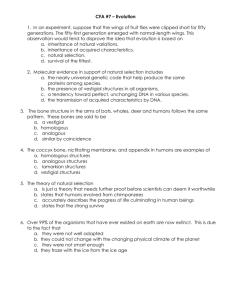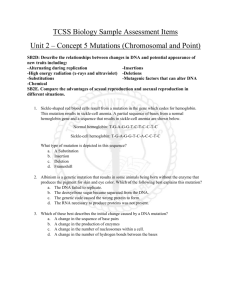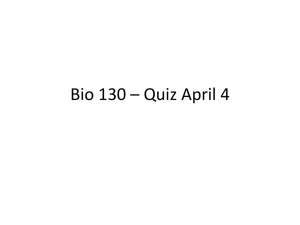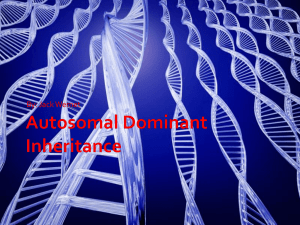Terms - The Building Blocks For Learning
advertisement
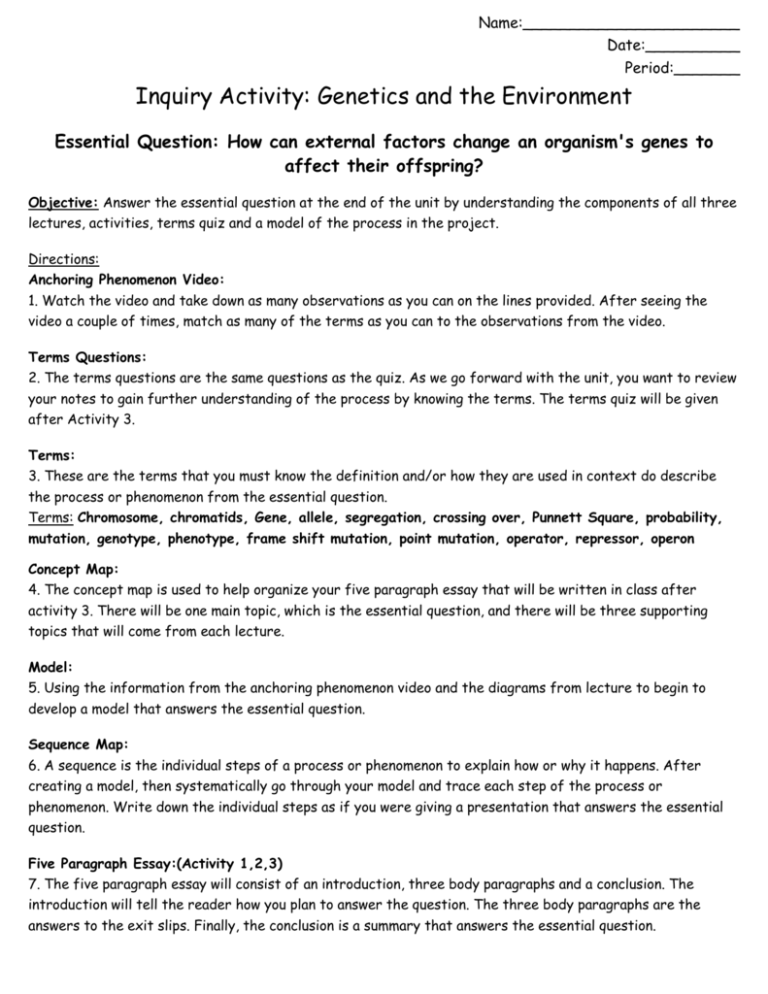
Name:_______________________ Date:__________ Period:_______ Inquiry Activity: Genetics and the Environment Essential Question: How can external factors change an organism's genes to affect their offspring? Objective: Answer the essential question at the end of the unit by understanding the components of all three lectures, activities, terms quiz and a model of the process in the project. Directions: Anchoring Phenomenon Video: 1. Watch the video and take down as many observations as you can on the lines provided. After seeing the video a couple of times, match as many of the terms as you can to the observations from the video. Terms Questions: 2. The terms questions are the same questions as the quiz. As we go forward with the unit, you want to review your notes to gain further understanding of the process by knowing the terms. The terms quiz will be given after Activity 3. Terms: 3. These are the terms that you must know the definition and/or how they are used in context do describe the process or phenomenon from the essential question. Terms: Chromosome, chromatids, Gene, allele, segregation, crossing over, Punnett Square, probability, mutation, genotype, phenotype, frame shift mutation, point mutation, operator, repressor, operon Concept Map: 4. The concept map is used to help organize your five paragraph essay that will be written in class after activity 3. There will be one main topic, which is the essential question, and there will be three supporting topics that will come from each lecture. Model: 5. Using the information from the anchoring phenomenon video and the diagrams from lecture to begin to develop a model that answers the essential question. Sequence Map: 6. A sequence is the individual steps of a process or phenomenon to explain how or why it happens. After creating a model, then systematically go through your model and trace each step of the process or phenomenon. Write down the individual steps as if you were giving a presentation that answers the essential question. Five Paragraph Essay:(Activity 1,2,3) 7. The five paragraph essay will consist of an introduction, three body paragraphs and a conclusion. The introduction will tell the reader how you plan to answer the question. The three body paragraphs are the answers to the exit slips. Finally, the conclusion is a summary that answers the essential question. Essential Question: How can external factors change an organism's genes to affect their offspring? Directions: Read the essential question above. After watching the video, you will have some ideas to create a hypothesis (guess) that answers the question. Hypothetical Answer: The external factors can change an organism's genes to affect their offspring by...(Complete with your response) ________________________________________________________________ ________________________________________________________________ ________________________________________________________________ ________________________________________________________________ ________________________________________________________________ ________________________________________________________________ ________________________________________________________________ ________________________________________________________________ ________________________________________________________________ ________________________________________________________________ Observations: During or after watching the video once, write down as many observations as possible. After watching the video for a second or third time, match the term to the observation you think it goes to. 1._______________ (Term: ) 2.____________ (Term: ) 3._______________ (Term: ) 4.____________ (Term: ) 5._______________ (Term: ) 6.____________ (Term: ) 7._______________ (Term: ) 8.____________ (Term: ) 9._______________ (Term: ) 10.___________ (Term: ) 11._______________ (Term: ) 12.___________ (Term: ) 13._______________ (Term: ) 14.___________ (Term: ) Terms: Chromosome, chromatids, Gene, allele, segregation, crossing over, Punnett Square, probability, mutation, genotype, phenotype, frame shift mutation, point mutation, operator, repressor, operon PLEASE, DO NOT USE YOUR BOOK DURING ACTIVITY!!!!!!!!!! Term Questions: The terms below can be used more than once!!! 1. What is a thread like structure within the nucleus containing genetic information that is passed from one generation to the next? 2. What is one of two identical (sister) parts of a duplicate chromosome? 3. What is the process in which homologous (matching pair) chromosomes exchange portions of their chromatids during segregation ? 4. What is one of a number of different forms of a gene? 5. What is a sequence of DNA that codes for a protein and thus determines a trait? 6. What is the genetic makeup of an organism? 7. What is a mutation that shifts the "reading" frame of the genetic message by inserting or deleting the base in the DNA sequence ? 8. What is a change in a DNA sequence that affects genetic information? 9. What is the physical characteristics of an organism? 10. What is a diagram showing the gene combinations that might result from a genetic cross? 11. What is a gene mutation involving changes in one or a few bases in the DNA? 12. What is the likelihood that a particular event will occur? 13. What is the separation of alleles when forming sperm and egg? 14. What is the region of a chromosome in an operon to which the repressor binds when the operon is "turned off"? 15. What is a group of genes that operate together? Terms: Chromosome, chromatids, Gene, allele, segregation, crossing over, Punnett Square, probability, mutation, genotype, phenotype, frame shift mutation, point mutation, operator, repressor, operon Diagram: Draw your diagram here and label using these terms (Chromosome, chromatids, Gene, allele, segregation, crossing over, Punnett Square, probability, mutation, genotype, phenotype, frame shift mutation, point mutation, operator, repressor, operon) and other words to describe your process. Your diagram needs to answer the question, " How can external factors change an organism's genes to affect their offspring?" Sequencing Map for the Diagram: From the diagram above, put into sequence the events that occur during this process in order that answers the question.

